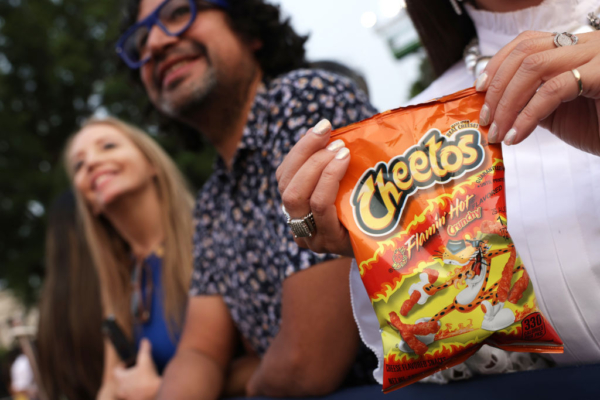A bag of Cheetos snack left on the ground – seems like a trivial matter, right? But for the staff at Carlsbad Caverns National Park in southern New Mexico, this incident is considered a “world-changing” event.
Carlsbad Caverns, known as the “Bat Cave” by locals, is one of the largest natural caverns in the Western Hemisphere, located in southern New Mexico. The park consists of approximately 84 major caves with unique and rare geological formations.
According to a report by the Associated Press on September 12, the bag of Cheetos may have been there for a day or two, or perhaps only a few hours, but the salty processed corn crumbs were softened by the cave’s humidity, triggering the growth of parasitic fungi and microorganisms on the cave floor and nearby cave structures.
“This has a huge impact on the cave’s ecosystem,” the park wrote in a social media post, explaining that cave crickets, mites, spiders, and flies quickly gathered to feed on and spread this foreign debris, essentially propagating pollution.
At the end of each day, park staff regularly clean the Big Room, the largest single cave in North America and a popular attraction in Carlsbad Caverns. This magical expanse is filled with towering stalactites and intricate stalagmites. During the cleaning process, the bright orange bag was discovered by the staff. They are searching for scattered snacks and any trash or other waste that may have been left on the paved pathways.
From the underground wonders of New Mexico to the shorelines of Nevada, tributaries of the Grand Canyon, and the spillways in Florida, park rangers and volunteers collect a significant amount of trash left by visitors each year. This is an ongoing battle aimed at preventing damage to these unique ecosystems while also allowing visitors to explore.
However, dealing with discarded snack bags and other debris left by visitors often requires some effort.
At Carlsbad Caverns, volunteers search for lint in the caves. A five-day event collected up to 50 pounds (22.68 kilograms) of lint. Rangers are equipped with cleanup and tool kits for more detailed, sometimes dirty, collection work.
Ranger tool kits include gloves, trash bags, water, bleach mixtures for disinfection, vacuum cleaners, and even bamboo toothbrushes and tweezers for cleaning those hard-to-reach areas.
As for the scattered Cheetos snacks, park guide Joseph Ward told the Associated Press that this could have been avoided because the park does not allow food to be taken out of the historic underground restaurant.
After the snack bag was discovered in July, cave experts at the park determined the best way to clean it up. Most of the dirt was scooped up, and toothbrushes were used to remove the fungi and mold that had spread to nearby cave structures.
Signs are posted throughout the park urging people to respect the cave environment. Rangers provide guidance to visitors before they venture underground, and each ticket carries important instructions on the back.
According to the National Park Service, over 300 million people visit national parks each year, bringing and generating nearly 70 million tons of trash, most of which eventually ends up in garbage bins and recycling containers.

